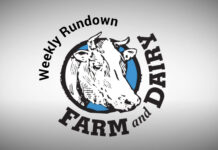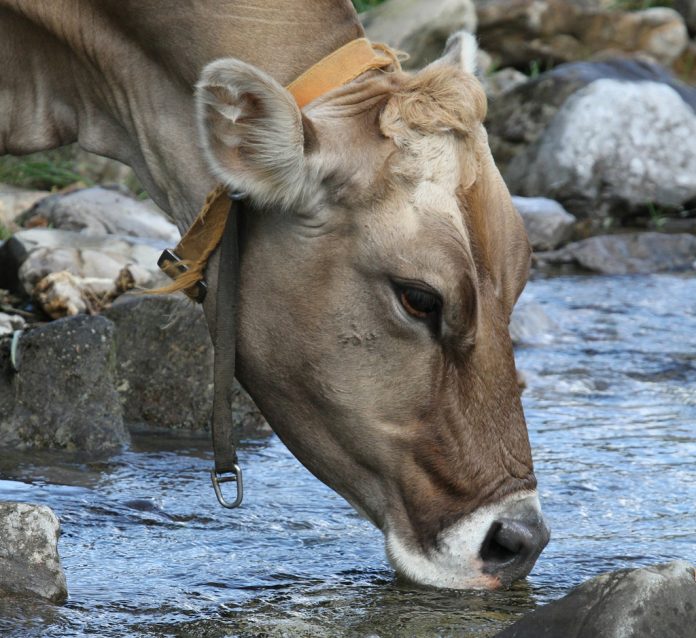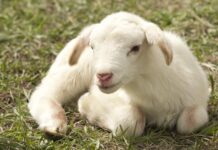I have a riddle for you. As a farmer, what is always on your mind but also never thought about? I will give you a hint. If you have too much, or too little, you worry constantly about it but if you have the right amount you don’t think about it. The answer is water.
We understand that water is the single most important nutrient to sustain life, yet there are times we may take it for granted.
After all, have you ever been standing in front of the kitchen sink, watching your neighbor get a rain shower that you wish would move a half mile to the north to help your crops out?
Water is often the limiting factor for crop growth and yield. Our crops in the field don’t care about the quality of the water, as long as they get it. For our livestock water availability is crucial, but the quality of their drinking water can be just as important to their health and performance.
No one understands this more than the dairy industry. Since milk is 87% water, a high lactating cow can consume up to 50 gallons of water a day. While over 60% of their water needs may be met through the ration they are eating, the quality and quantity of liquid water is a major driver in their production and health.
General recommendations are to have one waterer per 20 cows in free-stall housing. The waterer should be 2 to 3 feet high, allowing 3 to 5 inches of water space per animal, and a refill rate of at least 2.5 gallons per minute.
Historically, stray voltage has been a point of interest when consumption is determined to be too low. Research from Cornell University indicates that cows can habituate to currents of 3 volts or less but will refuse to drink once voltage exceeds 3 to 4 volts.
Although stray voltage is a legitimate concern, there are other quality factors that affect water intake and create production losses that may be difficult to pinpoint without testing your water sources.
Chemical
To avoid getting in the weeds, we will break water quality down into three main factors: chemical, bacterial and nitrate quality. In terms of chemical quality, water pH isn’t usually a problem until you get to the extremes. M
ost water sources will have a pH close to 7. When pH is less than 5.5 or greater than 8.5, cows can develop mild acidosis which lowers milk yield and depresses milk fat percentage.
Ground water is efficient at taking on the properties of the soil it passes through. It is common to find well water that has a high mineral content. This is usually reported as water hardness and salinity.
The thresholds for total salinity (salt content) vary depending on the species and stage of production. A soluble salt concentration of 3000 to 4999 milligrams per liter is satisfactory for most livestock but can cause some digestive upset in poultry. A level of 5000 to 6999 mg/L is safe for most dairy and beef cattle, sheep, swine and horse, but should be avoided for pregnant or lactating animals and is not acceptable for poultry.
Major issues can be detected in all species of livestock and poultry when concentrations reach 7000 mg/L. Levels at 10,000 or greater pose a significant risk and it is not recommended to provide this to your animals.
Bacterial
It is generally understood that ruminant livestock have a higher tolerance for potential bacterial water contamination, where poultry, swine and young ruminants are more susceptible to adverse water quality related health issues.
Bacterial contamination is more of a concern for grazing livestock that have access to ponds and low flow streams. In confinement housing, routine cleaning of waterers, buckets and bottles reduces most microbial contamination concerns. It is recommended that the total bacteria load be less than 200 parts per million and the total fecal coliform count be less than 1 ppm.
Nitrate
Ground and surface water can be a source of excess nitrates. Water testing 100 parts per million, or less for nitrates, typically presents no danger to any class of livestock. The water itself should not cause any issues with nitrate values between 100 and 300 ppm, but if harvested feeds are high in nitrates, the additional nitrate from water may contribute to toxicity issues.
Water testing greater than 300 ppm can result in nitrate poisoning and its use is not recommended.
You should periodically submit a water sample from each of your water sources for testing. You may have heard the saying that dilution is the solution to pollution. Collect samples from different times of the year as well.
You should collect samples in early spring as excessive rainfall may be carrying nutrients from fertilizer and/or manure applications from nearby agricultural fields.
You should also collect samples during the summer, as drought conditions can increase the salinity of the water source. In addition to sampling your well water, you should also sample any ponds, creeks and streams that your animals will have access to.
Also, don’t forget about municipal water sources. Some of our facilities are showing some age, and old piping systems can be contributing to poor water quality for some.
(John Yost is an educator in agriculture and natural resources at OSU Extension in Wayne County. He can be reached at yost.77@osu.edu.)













